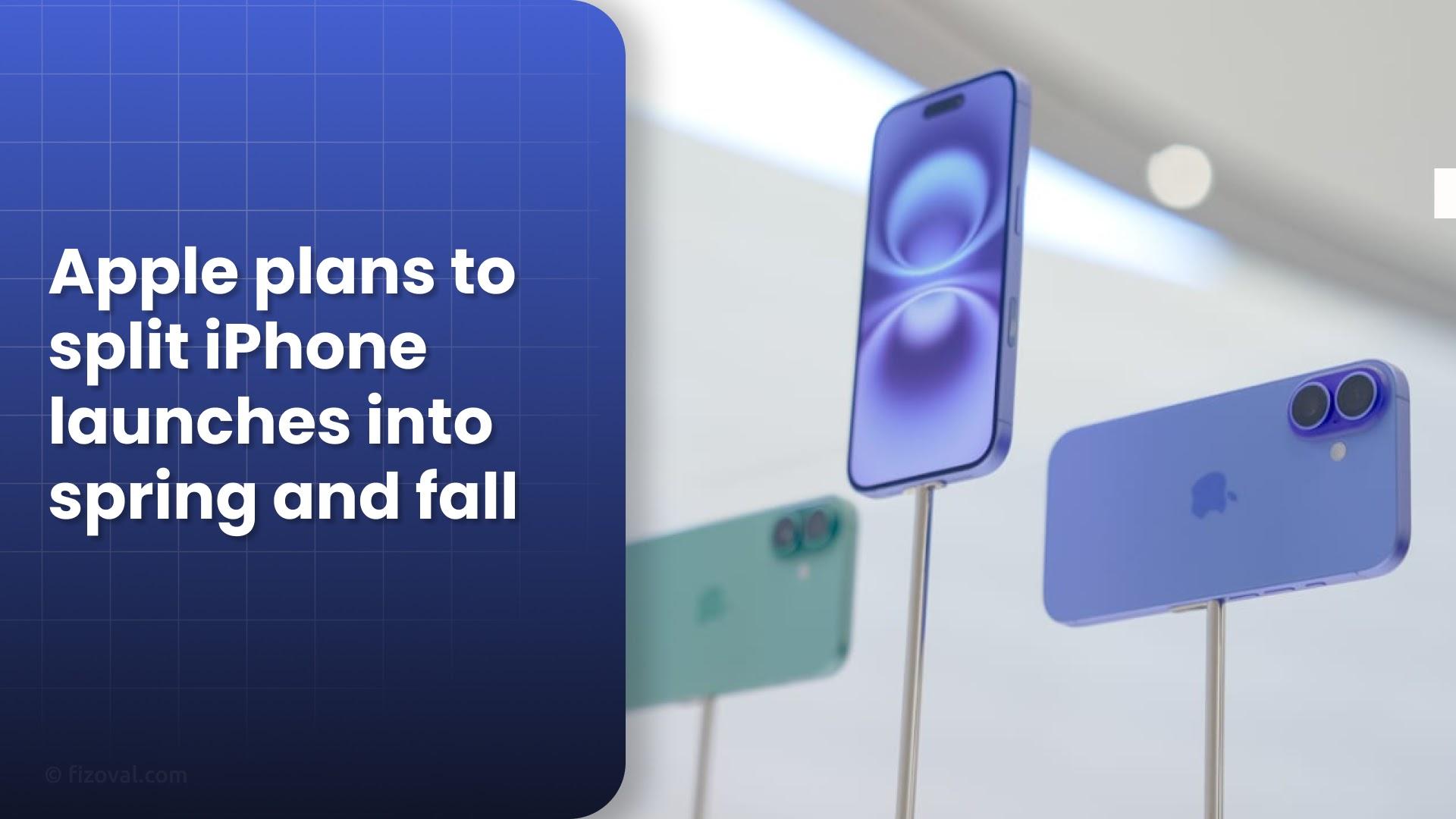"Apple is changing its iPhone launch schedule from a single September event to a twice-a-year release cycle starting 2026. Here’s what it means for users, competitors, and Apple’s revenue."
Apple is changing the iPhone release playbook
For more than a decade, Apple has followed a predictable pattern — a single grand iPhone launch every September. But beginning in 2026 and expanding in 2027, Apple will adopt a bi-annual launch format. Instead of unveiling all models at once, the company will release high-end iPhones in fall and mainstream models in spring. This is easily one of the biggest strategic shifts in Apple's iPhone history.
Why is Apple moving to two launches per year?
The decision isn’t just about product timing — it’s about competition and revenue. Chinese smartphone brands like Huawei and Xiaomi have been launching flagship phones multiple times a year, keeping consumer excitement active year-round. Apple had only one major hype window, leaving the first half of the year open to competitors.
With the new schedule, Apple plans to maintain global consumer attention continuously and compete more directly with Samsung, OnePlus, and other Android manufacturers who typically launch new flagships earlier in the year.
iPhone lineup release timeline: 2026–2027
Here is how Apple’s new calendar looks:
| Model | Release Period | Segment |
|---|---|---|
| iPhone 18 Pro | September 2026 | Flagship |
| iPhone 18 Pro Max | September 2026 | Flagship |
| Foldable iPhone | September 2026 | Flagship |
| iPhone Air 2 | March 2027 | Mainstream |
| iPhone 18 | March 2027 | Base Model |
| iPhone 18e | March 2027 | Budget |
Flagships and premium innovations — like the first foldable iPhone — will anchor September launches. Meanwhile, affordable and mainstream devices will get their own spotlight in spring instead of being overshadowed by the Pro lineup.
How will this change affect Apple financially?
iPhone sales currently make up 50–55% of Apple’s entire revenue. Historically, Apple sees a huge sales spike in the fall and a decline in the months that follow. With two major iPhone launches a year, revenue will be spread more evenly across the entire fiscal year — something investors are likely to appreciate.
- Less dependence on the September quarter
- Smoother year-round cash flow
- Reduced stress on supply chain and marketing teams
This more balanced cadence is expected to boost Apple’s operational efficiency and long-term financial stability.
Does this mean more iPhone models every year?
Yes, Apple will now release five to six iPhones annually instead of grouping them into a single event. The staggered schedule gives every model its own marketing space and avoids cannibalizing attention from budget or mainstream devices.
This is not a temporary experiment — industry analysts and Bloomberg report that the bi-annual cycle will become Apple’s new long-term strategy.
What does this mean for iPhone buyers?
- Buyers won’t need to wait a whole year for new upgrades or form factors.
- New price segments may emerge, especially around budget and mainstream devices.
- Trade-in timing might change — holding a phone for 12 months may no longer be optimal for best resale value.
In short, consumers may have more choice and better timing flexibility than ever before.
FAQs
1. Will September still be the most important launch month?
Yes. Premium iPhones and major innovations like the foldable model will remain anchored to September releases. Spring launches focus on mainstream and budget models.
2. Will the foldable iPhone definitely arrive in 2026?
Analysts strongly expect it, though delays are possible as Apple finalizes durability and hinge-design improvements.
3. Will prices go up because of more releases?
Not necessarily. Instead of price increases, Apple may expand pricing tiers to target more customer segments.
References
Bloomberg – Apple’s iPhone Overhaul Will Reduce Its Reliance on the September Quarter
MacRumors
India Today
Moneycontrol

